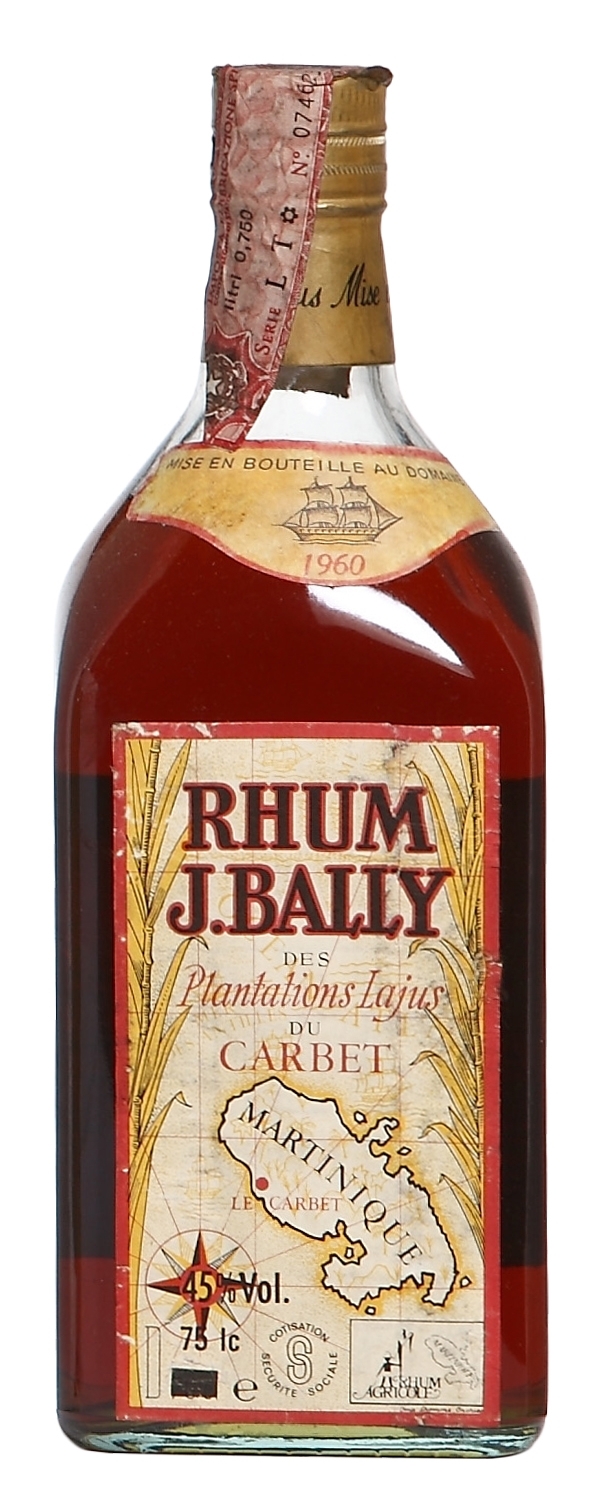Unless I start springing a few grand for ancient rums from the 1920s and 1930s, this is likely to be the oldest Bally rum I’ll ever see, or try. I suppose I could take a stab a guessing how truly old it is – who knows, maybe it’s in the fifteen year range too? – but for the moment I think I’ll just revel in the fact that it was made almost sixty years ago, way before I was born, by Jacques Bally’s boys before the estate shut down in the late 1980s and the production shifted to St. James. And who among us doesn’t enjoy revisiting rums made in ages past? A piece of the living history of our parents is what it really is. Too bad they weren’t into rums as much as we are.
Colour – Amber
Strength – 45%
Nose – The modern agricole profile is something of an afterthought on the nose. It smells salty and Haagen-Dasz carmel creamy; not really grassy or vegetal, more olive-y and brine and some paint stripper (the good kind). Some of the mineral (or ashy) background of the 1975 is also on show here, plus some weird green peas, overripe bananas and off-colour fruits sitting in an over-sterilized hospital. It’s crazy odd, emphatically different and shouldn’t really work….yet somehow it does.
Palate – The tastes which remind me of more recent vintages coil restlessly beneath the surface of this rhum, occasionally emerging for air to showcase grass, green grapes, sugar cane sap and soursop. Heavier, muskier flavours tie all of them together: prunes, peaches, pineapple, cinnamon, apples and the interesting thing is, it’s hardly sweet at all. Plus, the ashy, minerally taste remains (let’s call it “dirt” or “earth” or “sod”), which is not entirely to my liking, although it does succeed in balancing off the other components of the profile. Let’s call it intriguing at least, and hauntingly good at most.
Finish – Medium long, much of the palate comes back to take another bow before exiting stage left. Tropical fruits, some earth again, a flirt of breakfast spices, licorice and tannins. Pretty good, actually.
Thoughts – Parts of the rhum work swimmingly. The balance is a bit off, and overall, I felt it had many points of similarity with the 1975, with a few marked deviations too. What this says to me is that no matter which era (or where) Bally rhums were made in, there is an awesome dedication to consistency over the decades. The Bally 1960 would not be out of place on today’s shelves, and it would surely be better than many.
(88/100)
Yes, the other Rumaniacs have also written about this rhum, and for the record, they all scored it at 90+.
